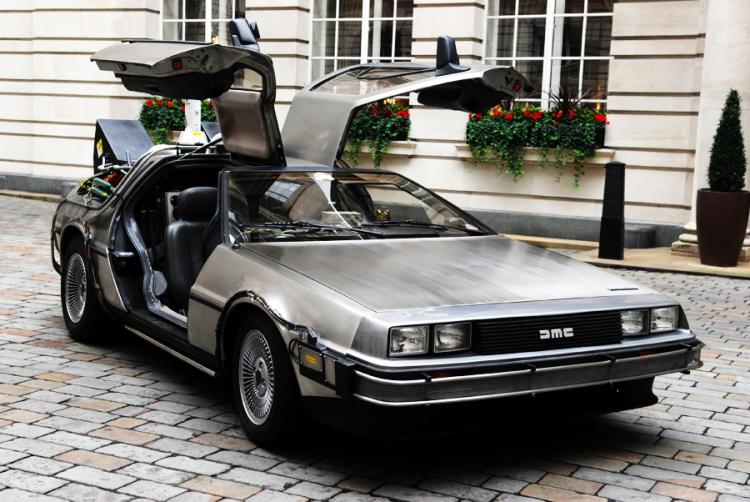The History of Car Brakes

The first cars in the late 1800s had brakes that functioned like the brakes on old horse-drawn carriages. You know, those brakes you see on the old Westerns where the stagecoach driver pulls a lever back and a pad jambs against the spoked wheel. (That and pulling back on the horse’s reins and yelling “Whoa.”) This sort of system may have worked for horse-drawn carriages but automobiles where faster and heavier and needed something a little more substantial.
External brakes
The first more modern braking system is attributed to Ransom E. Olds. His system consisted of a single flexible, stainless-steel band wrapped around a drum on the rear axle. When the brake pedal was applied, the band contracted to grip the drum. It performed well.
But Old’s external brake demonstrated some serious flaws. On hills, for example, the brake loosened up and allowed the car to roll backwards. For this reason, chocks were an important piece of on-board equipment. It was a common sight to see the driver jumping out on a hill with wood in his hands to block the wheels. There was another drawback. External brakes had no protection from dirt so its bands and drums quickly wore. A brake job every 200 to 300 miles was not considered unusual.
Internal brakes
The internal brake was a superior design. As long as the brake shoes were under pressure, they stayed against the drums to keep the car from rolling. And, since brake parts were inside drums and protected from dirt, drivers could go over 1,000 miles between brake overhauls. This type of brake became known as the “drum brake” and most of the world’s car manufacturers adopted the design.
Hydraulic brakes
In 1918, a young inventor named Malcolm Lockheed applied hydraulics to braking. He used cylinders and tubes to transmit fluid pressure against brake shoes, pushing the shoes against the drums. In 1921, the first passenger car to be equipped with four-wheel hydraulic brakes was the Model A Duesenberg. It was followed by Chalmers cars in late 1923. Walter Chrysler was at Chalmers at the time and in 1924 he left to found Chrysler Motors. According to York Chrysler of Crawfordsville, a Chrysler, Dodge, Jeep, Dodge dealer in Crawfordsville, IN, the 1925 Chryslers offered four-wheel hydraulic brakes that were based on the Lockheed principle.
Carmakers as a group were not quick to adopt hydraulics. Ten years after the Duesenberg, in 1931, only Chrysler, Dodge, Desoto, Plymouth, Auburn, Franklin, Reo, and Graham had hydraulic brakes. All the others still had cable-operated mechanical brakes. It was not until 1939 that Ford finally gave in, becoming the last major manufacturer to switch to hydraulic brakes.
Disc brakes
In Great Britain, during the 1950s, disc brakes appeared. These brakes consisted of a disc that spun with the wheel and had opposing brake pads to slow down the car. Disc brakes became more or less standard on European cars during the ’50s, about 20 years before they were adopted by American manufacturers in 1973.
Power brakes
The first car to be equipped with a vacuum-operated power booster similar to those we have today was the 1928 Pierce-Arrow. It used vacuum from the inlet manifold to reduce the physical effort needed to apply brakes. Vacuum boosters from then to now have similar designs.




